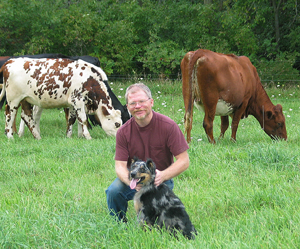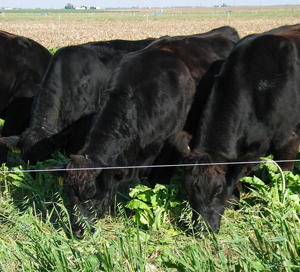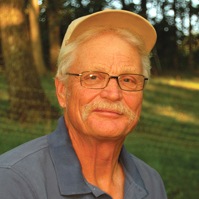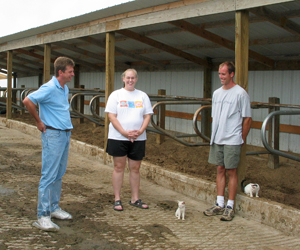Check back here for the Grazeblog!
Making do at the end of the easy oil era
By Joel McNair, Belleville, Wisconsin — Talk of $200 per barrel crude oil and seven-dollar per gallon gasoline grabs headlines and earns sound bites, and indeed these things may be reality sooner rather than later. Or they may not.
History and common sense tell us the current oil price trend line will not continue unabated. My own guess, shared by others but still mainly conjecture, is that a severe global economic slowdown created by a nasty combination of U.S. fiscal problems and entwined energy/food price inflation will depress oil demand over the next few years. U.S. use is already dropping, and the rapid pace of growth in India and China will be slowed, although probably not reversed. Continue reading “Making do at the end of the easy oil era”
Tips for strengthening the ewe-lamb bond
By Janet McNally, Hinckley, Minnesota — At this writing I am smack dab in the middle of lambing, so please forgive me if I’m having a difficult time writing about any other subject. I had planned to finish a second article on crossbreeding, and will get to that in the next issue, but I would like to address lambing while it is fresh on my mind.
The subject here is bonding, which is of tremendous importance to lamb survival in pasture lambing programs where there are no pens to keep newborns with their mothers. The bonding process occurs from birth through the first few days of life. The dam may reject her lamb if they are separated for as little as 30 minutes after birth. The more lambs in each litter, the more important it is that all of them remain with the ewe at all times. Continue reading “Tips for strengthening the ewe-lamb bond”
Methods for calculating marketing costs
By Jim Munsch, Coon Valley, Wisconsin — Take a stroll through the meat market, do some math, and your first inclination is to say that direct marketing of beef will pay a producer.
We farmers have been basically saying that for years. Ever since I can remember, I’ve heard uncles, cousins and neighbors complain about store prices for food, and the fact that the “middleman” is making all the money. Behind this emotional observation is an acknowledgement of a real economic truth: Middlemen tend to be a small number of for-profit organizations with considerable economic power compared to individual producers of much smaller scale and with feeble economic power. In some cases their performance can be inconsistent, resulting in equally inconsistent demand and prices for your products. Continue reading “Methods for calculating marketing costs”
To succeed, we must plan for seven generations
By Jim Van Der Pol, Kerkhoven, Minnesota — This is the fifth and final column of a series on my thoughts on the impacts our farms and businesses may have upon our families, the communities in which they are located, and ultimately upon the world at large. I started with an illustration of a deflected arrow, went on to talk about our farms and our children, then about labor and technology, value-added farm product-based businesses, and learning to do business with our friends.
This piece is last because I put it off. It is the most intimidating of all, because in it I will try to convince you that all of these things are possible. It is necessarily then about attitude, about core belief, be it philosophy or religion; that is, about how we view ourselves and our place in the universe. Continue reading “To succeed, we must plan for seven generations”
From zero to $300,000 in five years
Young couple shows there’s money in start-up grass dairy
By Larry Tranel, Kieler, Wisconsin —There is no money in dairying. Dairying is too much work. It takes too much capital to start dairying. You can’t graze dairy cows profitably. You cannot outwinter dairy cattle and survive. You can’t crossbreed dairy cows. You can’t start dairying with high-priced land and cows.
You can’t be profitable with 15,000 pounds of milk per cow. One person cannot handle 80 cows. Profits of $1,000 per crop acre or $1,000 per cow for return to labor cannot be done. Earning $30-$50 per labor hour milking cows is impossible. Landlords are better off getting rid of the dairy cows and cash cropping the farm. You can’t earn a 20% return on assets from dairying. You need more than 80 cows or 80 acres to make it dairying. The naysayers go on and on. Continue reading “From zero to $300,000 in five years”





